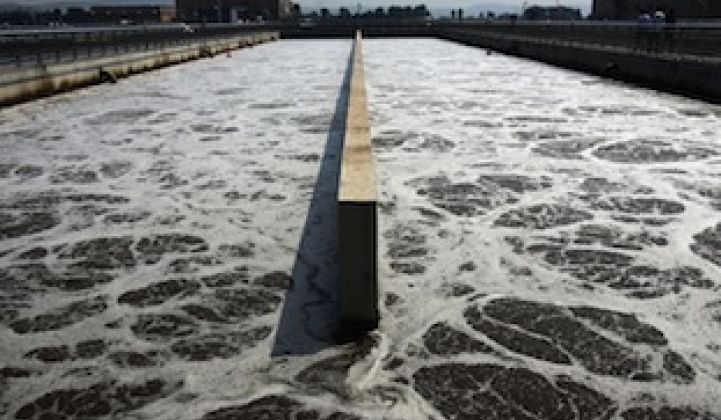There are astounding statistics about how much U.S. drinking water is lost due to leaking pipes. There are roughly 240,000 water main breaks per year, and repairs could reach into the trillions of dollars. So how can we use water -- and water-intensive energy -- more efficiently? Even more challenging is finding ways for utilities to finance capital-intensive infrastructure investment.
These are some of the issues covered in a new report entitled 2013 Strategic Directions in the U.S. Water Industry released by engineering and consulting firm Black & Veatch.
“This issue is best indicated by the challenges we see from our energy and water reports. The energy report finds water to be the number-two challenge and the water report’s second sustainability challenge is energy,” according to Cindy Wallis-Lage, president of Black & Veatch’s water business. “About 30 percent of the total annual operating budget at utilities is for water.”
Energy use in the water industry needs to be more efficient, Wallis-Lage said, and the water treatment side of the business is making strides toward energy efficiency. “Pumping water more efficiently is important.”
But many utilities already struggle with shifting business models, as distributed generation reduces their customer base and demand response programs mean selling less power. At the same time, aging infrastructure must be replaced at great cost without significantly increasing the ratepayer burden while the consumer-based U.S. economy continues to recover from recession.
“A challenge in going down this path is budgets. Funding competition could be a limitation,” said Wallis-Lage. Performance contracting and public/private partnerships offer partial funding solutions.
However, strategic investments can save considerable amounts of money, she pointed out. Kansas utility Water One, which serves 400,000 customers, shaved 20 percent from its total annual energy bill by installing optimization software. “WaterOne has been able to reduce peak summer demand by up to 4 megawatts and achieve cost savings of more than $1 million per year,” according to the B&V report.
It’s important for water utilities to work closely with power generators to find cost saving opportunities, said Wallis-Lage. She cited Duke Energy and the Tennessee Valley Authority as examples. “Duke has worked closely with water utilities to reduce energy requirements at water treatment facilities, which frees up power load and prevents them from having to expand power plants,” she said.
Unfortunately, it appears unlikely that rate increases can be taken completely off the table, said Wallis-Lage.
“Rate increases are necessary to improve infrastructure as needed. It’s been taken for granted, but now it’s time to reinvest. The public or end-user needs to be educated as to why their bills should be higher.”
Resource recovery should be a focus area, she said, as biological deposits -- that is, human waste -- entering treatment facilities have an energy component that can be harnessed. “A lot of energy comes in that should not be wasted. It needs to be harnessed instead of destroying it, like creating methane gas from the waste stream.”
“Utilizing recycled methane gas from its wastewater treatment operations as the primary fuel for its dryers, the Morris Forman Water Quality Treatment Center, owned by the Louisville and Jefferson County (Kentucky) Metropolitan Sewer District, produced and distributed 28,210 tons of treated biosolids fertilizer to bulk agriculture, fertilizer blenders and local retail outlets,” according to an example posted on the B&V website.
“Innovation is allowing us to capitalize on a waste stream that can be an energy source,” Wallis-Lage said.
***
Editor's note: This article is reposted in its original form from Breaking Energy. Author credit goes to Jared Anderson.



